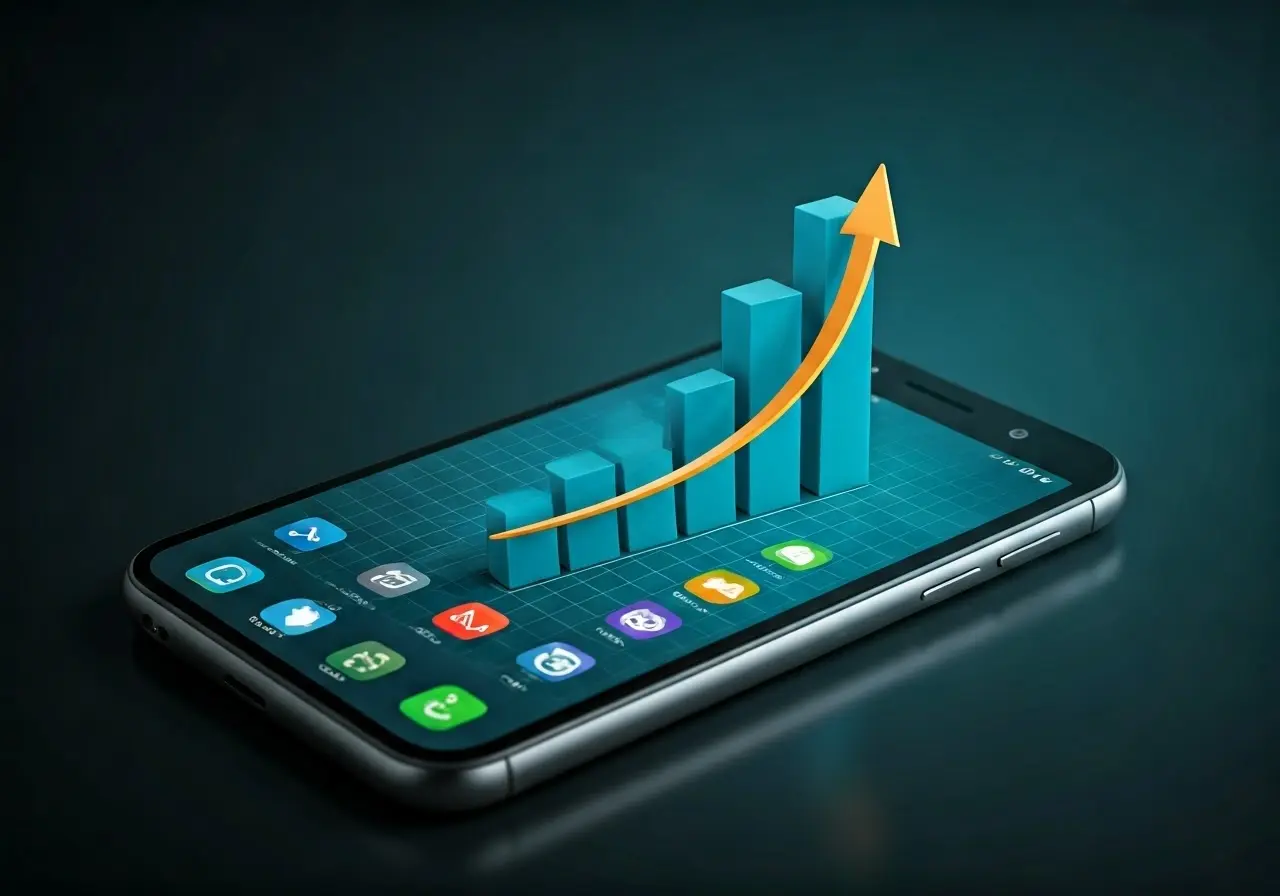In today’s fast-paced digital world, mobile apps have become a cornerstone of success for startups. They not only provide businesses with a platform to reach a wider audience but also offer unique opportunities to engage and grow their customer base. In this blog, we’ll explore how mobile apps play an essential role in shaping modern startup strategies.

Understanding the Importance of Mobile Apps
Mobile apps have become a pivotal tool for startups, enabling them to tap into a wider market and enhance their brand visibility. By leveraging apps, businesses are not only making their services more accessible but are also integrating deeper into their customers’ everyday lives. This integration facilitates smoother, more personalized interactions, and allows startups to distinguish themselves in crowded markets. By offering practical functionalities like seamless payments, real-time customer support, and personalized content, mobile apps foster a sense of connection and reliability among users. As customers increasingly seek convenience in their interactions with businesses, having a dedicated app can provide an edge by delivering instantaneous solutions and ensuring that users remain engaged and satisfied.
For startups trying to break into highly competitive spaces, mobile apps offer a transformative platform to establish authority and trust. With the right approach, startups can analyze consumer data gained through app interactions to refine their offerings, predict trends, and remain responsive to changing customer needs. This data-driven approach enables businesses to optimize their strategies and create more targeted marketing campaigns. Moreover, apps allow companies to test new ideas and iterate based on user feedback, facilitating continuous improvement. The versatility of mobile technology offers endless possibilities, encouraging startups to innovate and experiment with novel concepts, thus reshaping traditional business models into dynamic and adaptive ones.
How Mobile Apps Enhance Customer Engagement
In an age where customer engagement can make or break a company, mobile apps serve as a powerful tool to forge deeper connections with users. Unlike conventional web interfaces, apps provide users direct access to services and products, creating a more immersive experience. With features such as push notifications, businesses can keep their users informed about the latest updates, offers, and new releases, ensuring sustained interest. Push notifications have a notably high open rate, significantly outstripping that of email marketing campaigns. These succinct messages pop up on a user’s screen, serving as real-time prompts that keep the brand top-of-mind. But it’s not just about sending messages; it’s about delivering value. Whether reminding users of an abandoned cart or announcing a flash sale, these notifications target specific segments, making communication more relevant and personalized.
Mobile apps also foster engagement through gamification, loyalty programs, and community-building strategies. By incorporating elements such as points, badges, or leaderboards, apps turn routine interactions into engaging experiences. These gamified elements can encourage continued use, inspire a competitive spirit, and even foster a sense of belonging among users. Loyalty programs delivered via apps are another way startups can reward repeat customers, further cementing their engagement by providing tangible benefits for their continued patronage. Community features – like forums or social sharing options – transform an app from a mere tool into a space for user interaction, discussion, and exchange of ideas. This transition from solitary use to community involvement can significantly elevate the app’s value proposition and build loyalty and advocacy among users.
Driving Innovation Through Mobile Technology
Innovation is the heartbeat of any successful startup, and mobile apps are pushing the boundaries of possibility in this domain. With the integration of advanced technologies like artificial intelligence, AR, and IoT, startups can offer revolutionary products that were unimaginable a few years ago. Consider the app-powered healthcare solutions that are transforming the patient experience, providing remote consultations, medication reminders, and virtual health assessments. Similarly, in retail, apps utilizing AR offer customers the ability to visualize products in their homes before purchasing, enhancing customer satisfaction and reducing returns. These innovations are not just enhancements; they redefine consumer expectations and set new standards in usability and functionality.
The incorporation of IoT within mobile apps is particularly transformative. It creates an interconnected environment where devices can communicate seamlessly, greatly enhancing the user experience. For instance, smart home apps can now integrate with an array of IoT devices, allowing users to control lighting, security, and appliances from anywhere in the world. This level of convenience and control was once the stuff of science fiction but is now a hallmark of modern app-driven innovation. Moreover, the detailed data collected through these interactions offer immense value for startups, allowing them to refine their products and tailor their marketing strategies. The future of mobile applications is geared towards connectivity and personalization, driven by the technological prowess embedded in app ecosystems.
Case Studies: Startups Thriving with Mobile Apps
Several startups have turned to mobile apps to carve out successful niches in their respective industries. For example, the rise of personalized meditation and wellness apps has revolutionized how people approach mental health, making mindfulness accessible to millions with a click of a button. Apps like Headspace and Calm have tailored their features to encompass guided meditations, sleep aids, and stress-relief exercises, offering an oasis of calm in a hectic modern world. These apps continually innovate by incorporating user feedback and leveraging content personalization, ensuring they remain relevant in an increasingly competitive wellness market.
Another standout example comes from the food delivery sector, where companies such as Uber Eats have redefined customer convenience. By integrating customer-focused features such as real-time tracking, AI-driven recommendations, and secure payment options, these businesses have set the standard for on-demand service apps. The success of such platforms demonstrates how effectively mapping user journeys and providing intuitive interfaces can drive customer satisfaction and business profitability.
Moreover, innovative platforms in employment services are reshaping traditional hiring practices. Apps like LinkedIn have expanded their capabilities far beyond networking to include job applications, skill assessments, and professional learning modules. These startups demonstrate how mobile technology can streamline traditionally cumbersome processes, creating more dynamic and responsive business models. As these cases reveal, mobile apps can be a critical factor in driving business success, crossing traditional boundaries to forge new market paths, and offering unparalleled value and convenience to consumers.
Best Practices for Developing Effective Mobile Apps
To maximize the potential of mobile apps, startups must adhere to best practices in their development processes. Understanding user needs and preferences is an essential first step. Startups should engage in early and continuous user research to ensure that their app aligns with customer expectations and solves real problems. This research should inform all stages of development, from initial wireframing to final testing, ensuring that every feature added brings value to the user. Furthermore, a focus on user experience is critical; apps must offer intuitive navigation, aesthetically pleasing design, and responsive performance to captivate and retain users.
Security cannot be overlooked in the development process. Startups should integrate robust security measures to protect user data, such as encryption and multi-factor authentication, and ensure compliance with relevant data protection regulations. Failure to secure an app can result in significant reputational damage and loss of customer trust. Moreover, as apps evolve, startups must commit to regular updates and iterations. This not only fixes bugs and improves security but also incorporates new features and optimizations based on user feedback. By keeping their apps dynamic and up-to-date, startups can maintain their relevance in a rapidly changing technological landscape.
Lastly, effective marketing strategies are crucial to the success of mobile apps. Implementing App Store Optimization (ASO) ensures that apps achieve visibility in app stores, reaching the intended audience. Startups should leverage social media marketing, influencer campaigns, and content marketing to create buzz around their app launches and maintain engagement with their user base. By adopting a holistic approach to mobile app development and marketing, startups can transform their digital presence, engage with their audience authentically, and ultimately achieve sustained growth and success.
Embracing Mobile Apps for Startup Success
In conclusion, mobile apps are no longer just an option but a necessity for startups looking to thrive in the modern digital landscape. They offer unparalleled opportunities for growth, engagement, and innovation, serving as a bridge between ideas and execution. Startups that harness the power of mobile apps are better positioned to succeed in an increasingly competitive market.










